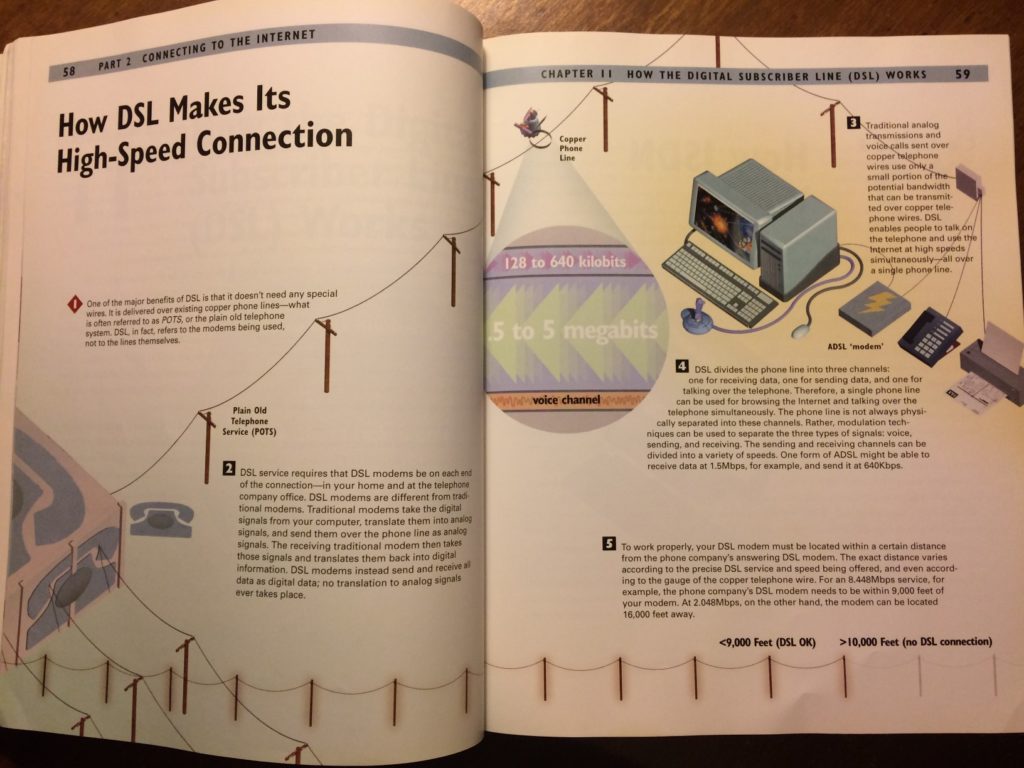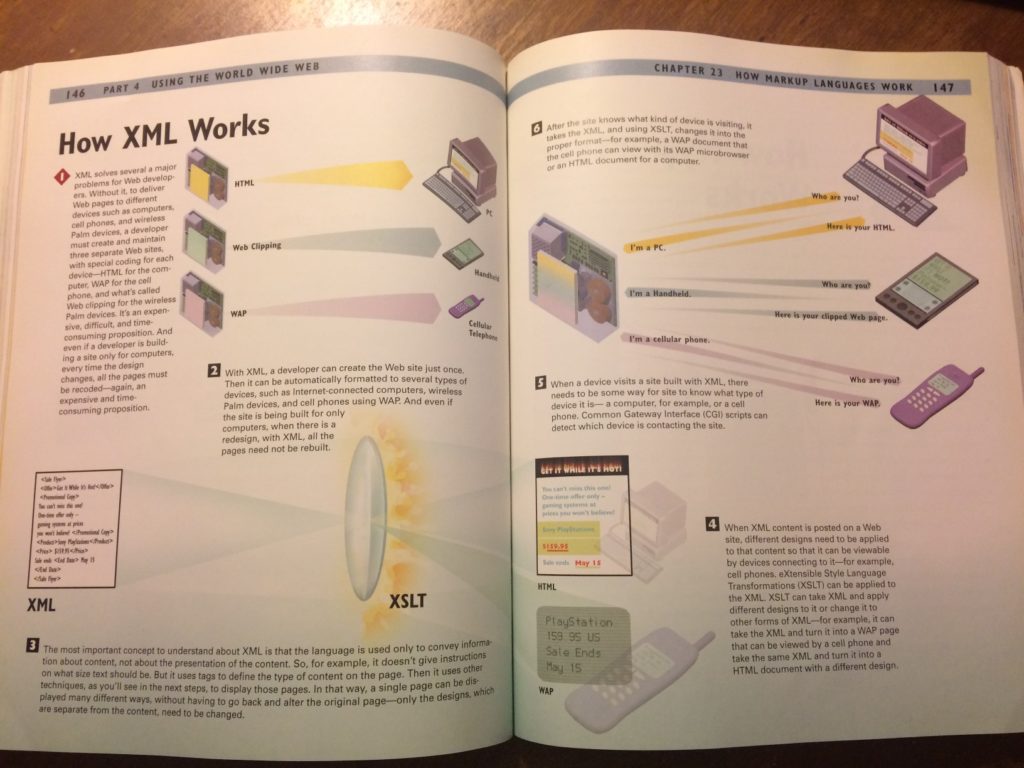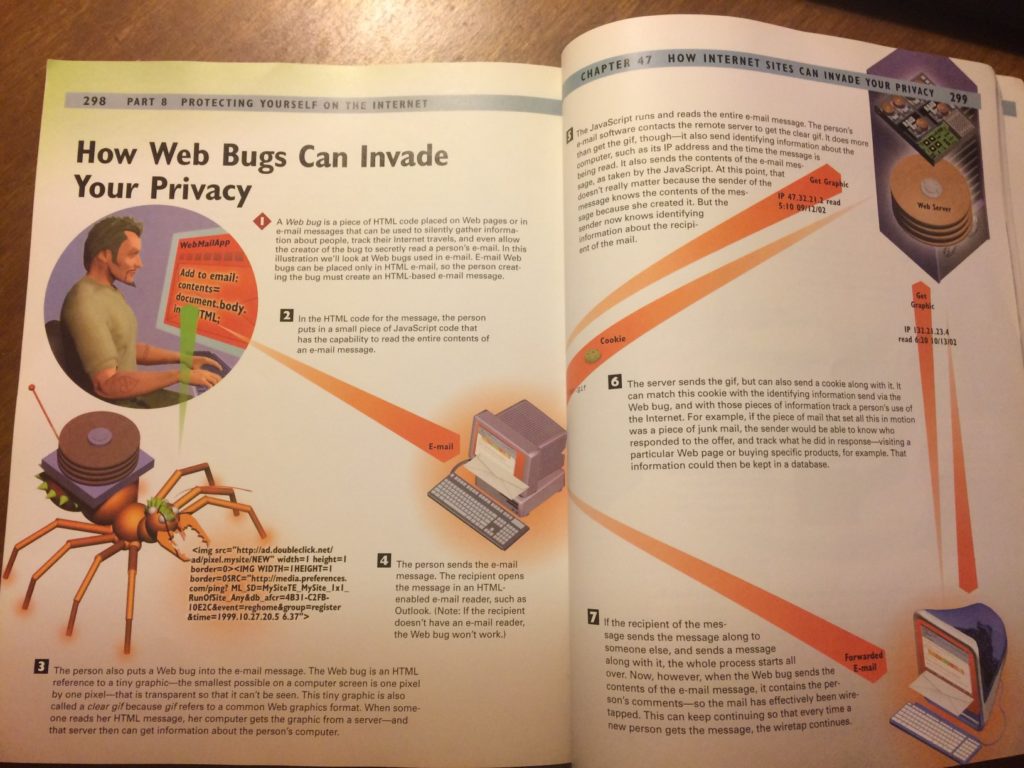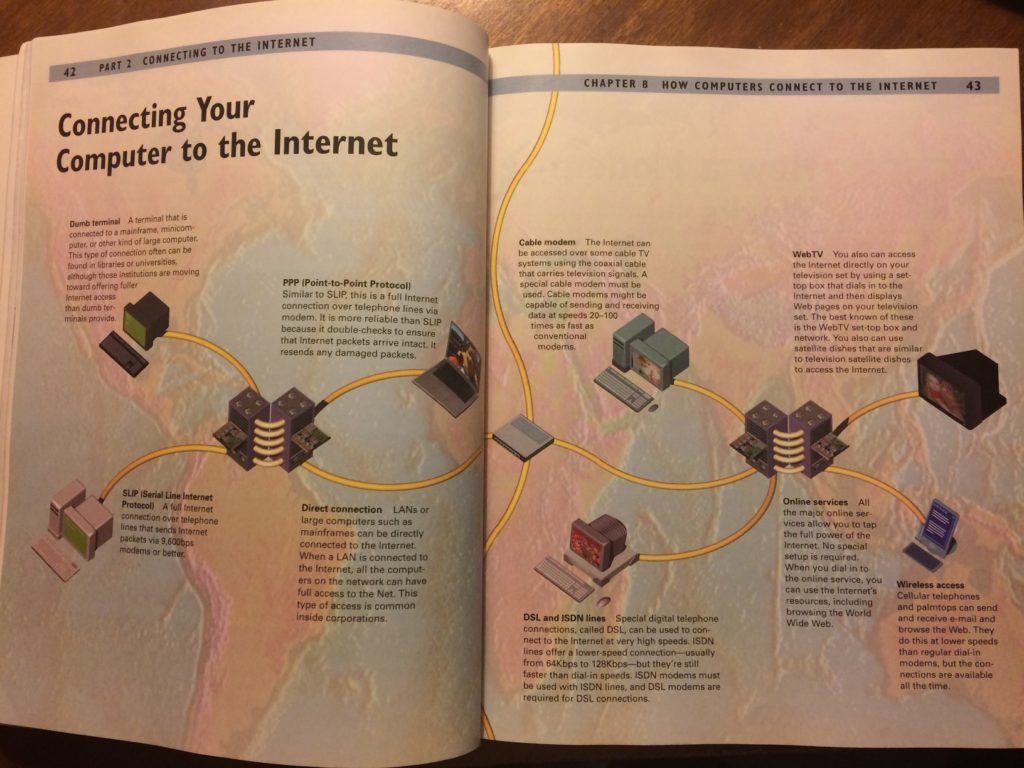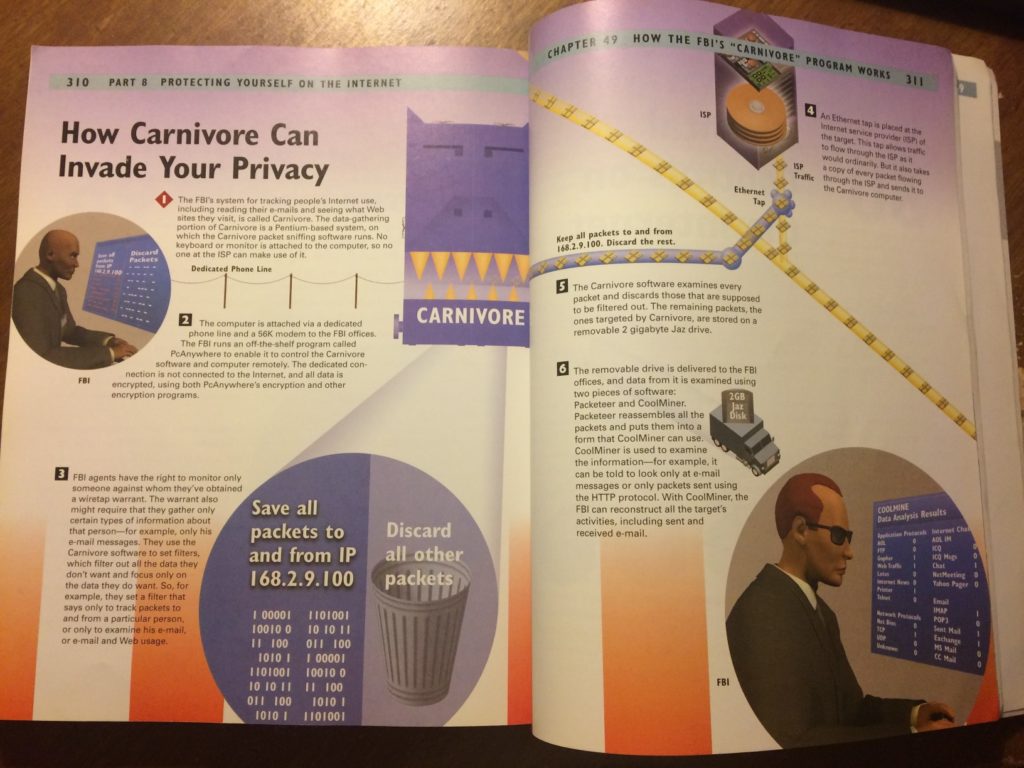How the Internet Works
- Posted by mariteaux on July 24th, 2020 filed in Sperging
- Comment now »
I wrote a lovely little rant about internet technology the other day, so let’s counter that with something more fun I’ve been meaning to show off. I still have a few computer books from my youth I’d like to ramble about, and today’s is one I carried around and picked through at lunch a lot in middle school, the sixth edition of Preston Gralla’s How the Internet Works.

Now, believe it or not, my history with making websites stretches all the way back to when I was 6 or 7 years old. I remember using Webs back when it was called Freewebs (man, ain’t this a trip), and just like these days, I remember making far too many websites. (Would you visit a site featuring stories about the Pac-Man ghosts? And that’s just the one I can remember, I had a bunch of them at various points.) Nowadays, they’ve apparently rebranded and are apparently terrible, but I enjoyed my time there. I think I also remember making their little globe bauble logo out of clay once. I was a very strange kid.
For as long as I’ve been on the internet, I’ve been playing with the inner workings and making stuff for people to look at. I remember dabbling in HTML way back when too, saving the file and seeing the text or whatever appear in the browser, just magically. Of course, I didn’t know anything about doctypes or CSS and <body bgcolor="green"> was a way of life, but hey, it worked. That’s really where my initial interest in this book came from. I think it was one of those library finds I just sorta really had to have my own copy of, and even though it was dated even at the time (this thing came out in 2002, and I only found it in 2010, remember), I loved it. I loved the ridiculous, plasticky full-color 3D renders, I loved how simple and straightforward it was, and I loved all the obsolete technology within.
How the Internet Works is split up into eight sections, going from the basics to basic communication, email and whatnot, to multimedia, scripting, shopping, and the latest and greatest in ways people can watch you through your computer. Big data had yet to touch down just yet, so people’s concerns were more local. Viruses and trojans, especially Melissa, are discussed, as is Back Orifice for remotely controlling a machine nefariously. Most amusingly, the FBI’s Carnivore packet sniffer is given its own chapter, complete with illustrations of two glowies wiretapping some poor sap’s ISP and transporting the data on a “2GB Jaz Disk”.
In case you can’t tell from the above picture, this book uses Poser 4 default models for its humans. Of course, you gotta get your human models from somewhere, they’re kinda unavoidable in this context; I mostly find it amusing how recognizably hideous Poser models really are. “Dork” and “Posette“, as they’re known, are featured heavily throughout. Elsewhere, you can find completely inedible cookies, bizarre winged bots with giant noses and arms coming out of their heads (“agents” they call them–or you know, robots and spiders), knockoff iMac G3s and G4 Cubes with Studio Displays, chunky servers and even chunkier cell phones with text-only displays. I’m making fun of none of this because it’s a glorious sight to behold.
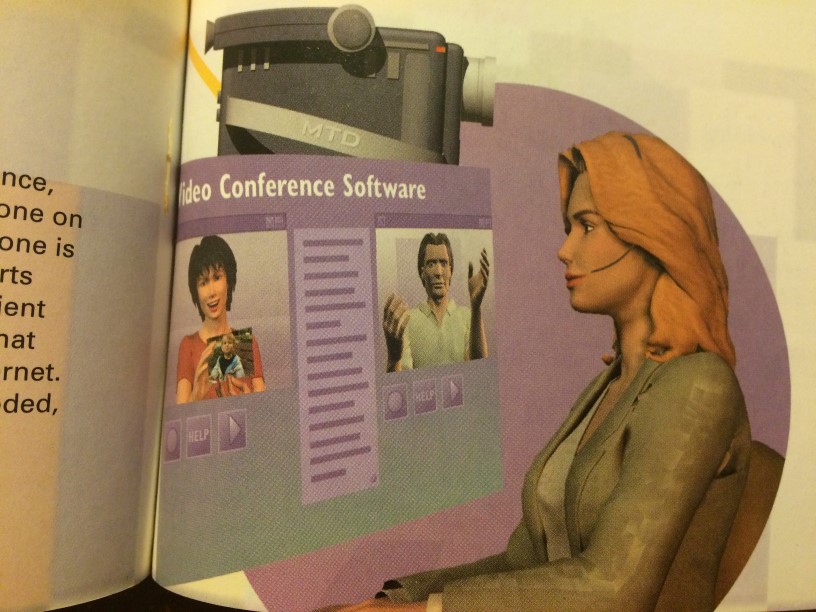
A look through this kinda book shows you just how much things stay the same as they change. The internet in 2002 might’ve looked a lot different than the internet now, but they were still streaming video (over the Mbone, of course) and they were still talking about connecting their fridges, microwaves, security systems, and baby monitors on the internet with little regard for security. In all seriousness, some of this genuinely hasn’t changed a bit. The information on the various ways of connecting (modem, DSL, cable, even ISDN) are still reality for the vast majority of us, internet radio, email, and CGI scripts all still do exactly what they used to, you still shop, and people still DDOS stuff.
Don’t let the dated illustrations and talk of WebTV fool you. This is still largely how the internet works.
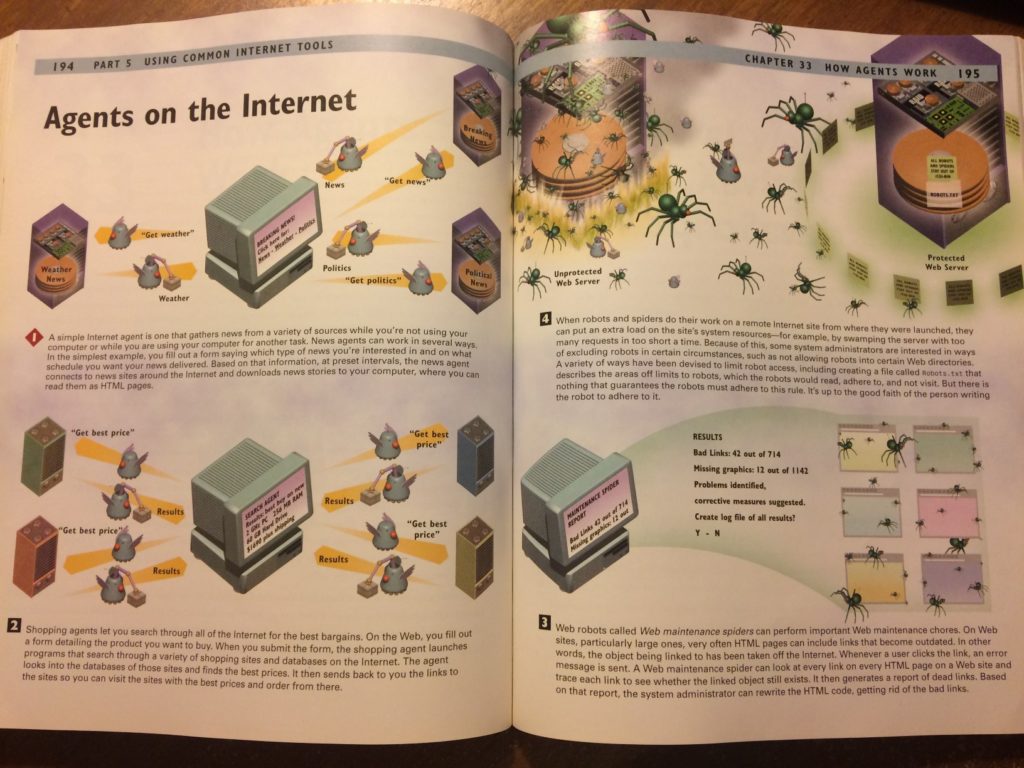
How the Internet Works stalled out on its eighth installment, which was published in 2006. That’s as new as you’re getting. The guy who wrote it is still actively writing for Computerworld, and the last thing he tweeted was about how bad orange man was. Twitter was a mistake.
I leave you with a few more of my favorite spreads. Click through for the full-size, they’re actually pretty interesting reads. Apologies for the pictures, the binding on this one hasn’t collapsed into goo yet, so it’s a bit stiff without my hand in the shot holding it.
